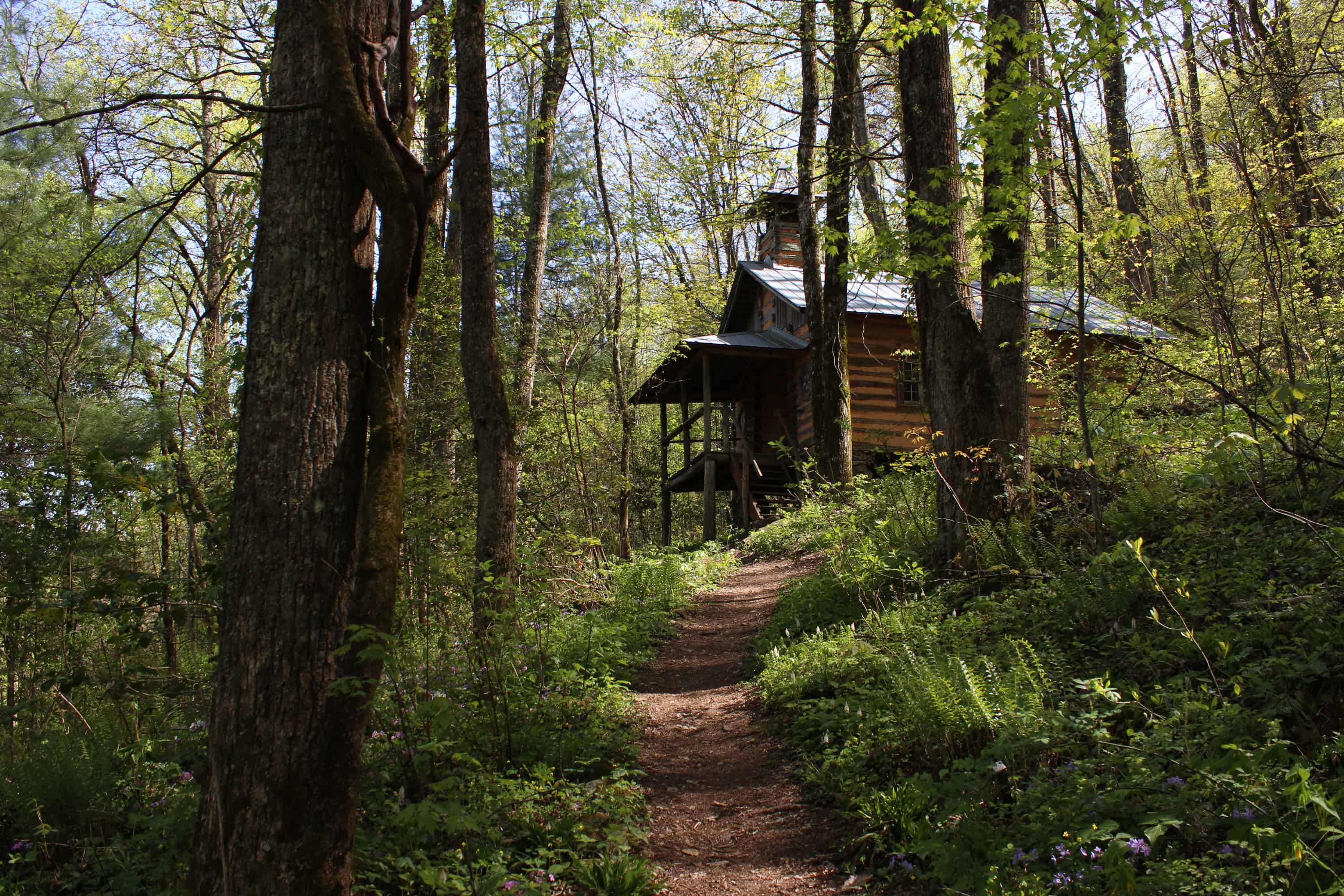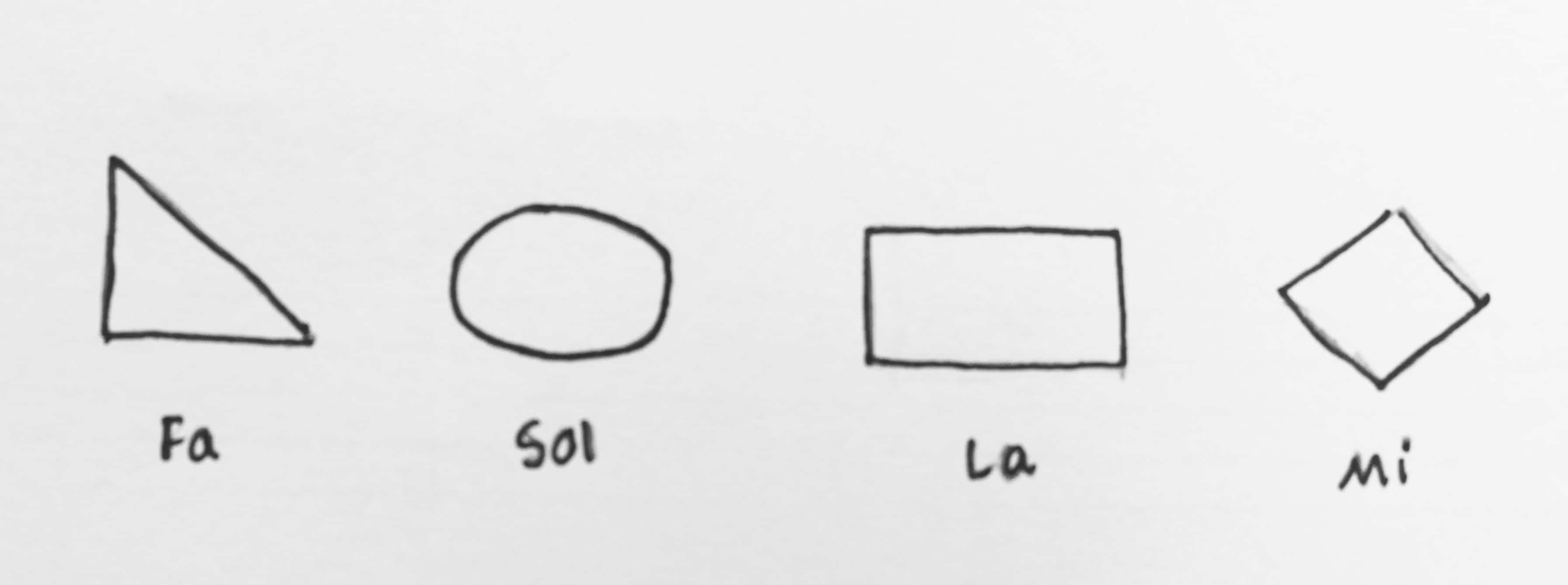
The Foxfire Chapel
The image of a local church nestled deep within the Appalachian Mountains, beloved by those in the community and serving as a site of local music and worship, is one of the most iconic buildings at Foxfire. As part of the NEH Challenge Grant awarded to Foxfire in 2016, we are working on reinterpreting our museum spaces, which includes updates to our chapel exhibit. This exhibit will explore the story of shape note music. As visitors enter the chapel, they are now greeted with a recording from Christian Harmony of a traditional shape note vocal performance. We hope this emotive and immersive experience will enhance every visitor’s trip to our museum.

The four shape notes.
Though once commonly known, many visitors no longer recognize the term “shape not music,” but the pattern of triangular and square music notes often catches their attention. What makes shape note music special is the logic behind its name – how the individual notes are shaped on the music staff. In traditional, classical music, notes have standard circular shapes. In shape note music, however, the music is written with a series of shapes – a right triangle, an oval, a rectangle, and a diamond. These shapes correspond to different syllables, with the triangle correlating to the syllable fa, the oval to the syllable sol, the rectangle to the syllable la, and the diamond to the syllable mi. The shapes also indicate the different pitches. The interval, for example, between any fa or la is the same. These syllables allow for the singers to understand the structure and shape of the song before singing the lyrics to the song, which makes shape note singing easier to understand and learn than other forms of choral and instrumental music. This is why it was so prevalent within small community churches. It was easy for every member to learn the music and therefore contribute to the group worship. The pulse of the music comes from how the singers accent the first and third beats of each measure. This pulse becomes the heart of the music and allows for each person to experience the music in a group-oriented way, while individually conducting their own worship.
Shape note music found its home in the Appalachian Mountains after the conclusion of the Civil War. The music became an important aspect of these communities because it allowed for group worship without requiring literacy from everyone in the congregation. These ‘singings’ also allowed for whole communities to come together as one and experience music and religion simultaneously. Therefore, shape note music and its presence within the local churches of these small mountain communities came to define the religious experience of Appalachian communities during this era. For this reason, the addition of shape note music into the chapel exhibit truly enhances the experience of visiting the chapel at the museum. Now, not only can you sit and immerse yourself in the exhibit, but you can craft a better understanding of what worship in Southern Appalachia would have felt like in the late 1800s. It is not impossible to imagine yourself as a member of the local congregation singing shape note music and enjoying being part of a thriving religious tradition with your family, friends, and community.

Shape notes written with the correct syllable underneath. This is the C Major or Concert B-flat scale.
As I stood in the chapel for the first time after the installation of the shape note music, I was overwhelmed by readily I could imagine myself here in this church 150 years ago singing shape note music and worshiping with my community. I knew then that this would be an incredible experience for our visitors to the museum. History is interesting when someone is simply telling you about it or when you read about it. But, here at Foxfire, we are have the ability to offer immersive experiences and give life to history. Our renovation of the chapel allows visitors to do just that.
Hope to see you at the chapel soon!
~Halle Fowler, Foxfire intern and former Foxfire student

I GREW IN SINGING CONVENTIONS IN THE 50S AND 60S AND 70 AND 80 WITH SHAPE NOTES